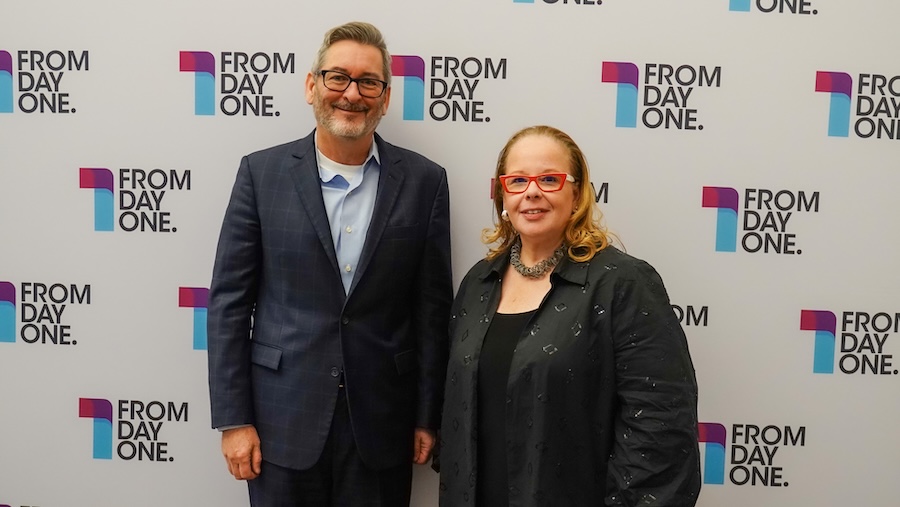Embedding DEI in Grantmaking: From Vision to Action


Embracing our differences and lived experiences enhances innovation, creativity, decision-making, and better problem-solving. But it’s not always easy to turn aspirations into tangible actions.
In a thought leadership spotlight session at From Day One’s Denver conference, Tanya Odom, director of equity and inclusion at the Walton Family Foundation, shared practical strategies and real-world examples of embedding DEI principles and practices into philanthropy, both internally and externally.
Odom painted a vivid picture of the Walton Family Foundation’s legacy, tracing its roots to its founding by Sam Walton and Helen Walton in 1987. “We’ve been in the space of diversity, equity, and inclusion for over 25 years,” said Odom.
In 2020, the foundation awarded $749.5 million in grants. “We actually fund in three very specific areas that are determined by the family, which are education, which has taken different pathways and ways of looking at it, but that’s been since the beginning. Another is the environment, more specifically oceans and sustainability. And the third is the home region, Bentonville, Arkansas, and Arkansas’ Mississippi Delta,” said Odom. “We infuse all of them with a sensibility about diversity, equity inclusion.”
“Our framework centers around three key pillars: embed, align, and amplify,” said Odom. Through these pillars, the foundation aims not only to incorporate DEI principles into its own operations, but also to foster similar initiatives among its grantees and partners.
This holistic approach reflects the foundation’s recognition of the interconnectedness of issues, and its commitment to driving systemic change. “It's not just about what we do internally,” she said. “It's about how we leverage our influence to effect change on a broader scale.”
Navigating the Last Few Years
The conversation turned towards the challenges faced during the pivotal summer of 2020, a period marked by widespread social unrest and calls for racial justice. Odom reflected on the intense global efforts during that time. “Many of us had never worked as hard as we did in the summer of 2020,” she said. “That summer and I would say the year after that. And I think there was a sense of people finally understanding what we did.”

Despite the challenges, Odom recalled this period as a catalyst for change. “We’ve been saying this, this is not new. Odom mentions the curb-cut theory, an awareness that once you find a pathway to address some of these inequities, or structural issues, you usually find ways to address other issues. “So while the summer of 2020 was called a racial reckoning, in Europe, it was also often called a social reckoning. It just highlighted so many other things.”
Leadership Buy-In and the Importance of Courage
Odom underscored the importance of courage in leadership and the willingness to take bold action. This call for courageous leadership highlighted the need for organizations to confront difficult conversations and actively engage in the work of dismantling systemic barriers to equity.
At the Foundation, Odom says, they held an interview with their board chair on the subject of diversity. “And that was very unusual. Our comms department actually got permission to have that go out onto social media. What was really important was that our board chair talked about how DEI connected to the thoughts and beliefs of Sam Walton. Sam Walton wasn't saying ‘diversity, equity and inclusion.’ But Sam Walton talked about access. So how do we connect it to the mission of the organization?”
Philanthropy's Roadblocks and Future Challenges
Despite the foundation's commendable efforts, Odom acknowledged the roadblocks and challenges facing philanthropy in its quest for DEI integration. “Dr. King has a quote,” she said. “Philanthropy is commendable, but it must not cause the philanthropist to overlook the circumstances, economic injustice, which makes philanthropy necessary.”
Odom remained optimistic about the future, emphasizing the importance of collective action and ongoing dialogue. “While the road ahead may be challenging,” she said, “I firmly believe that by working together, we can overcome these obstacles and create a more inclusive and equitable future for all.”
Editor's note: From Day One thanks our partner, the Walton Family Foundation, for sponsoring this thought leadership spotlight.
Cynthia Barnes has written about everything from art to zebras from more than 30 countries. She currently calls Denver home.
The From Day One Newsletter is a monthly roundup of articles, features, and editorials on innovative ways for companies to forge stronger relationships with their employees, customers, and communities.